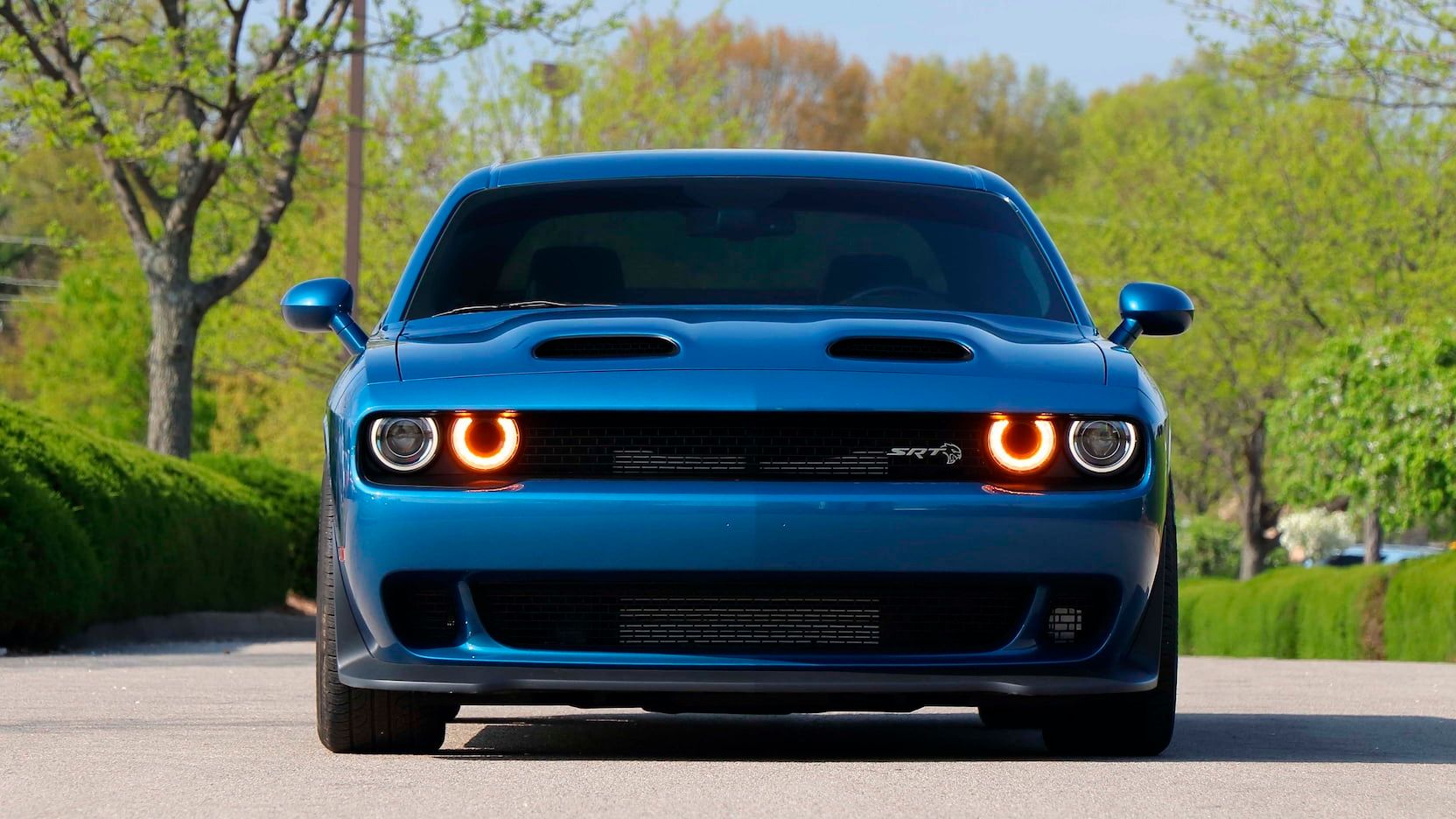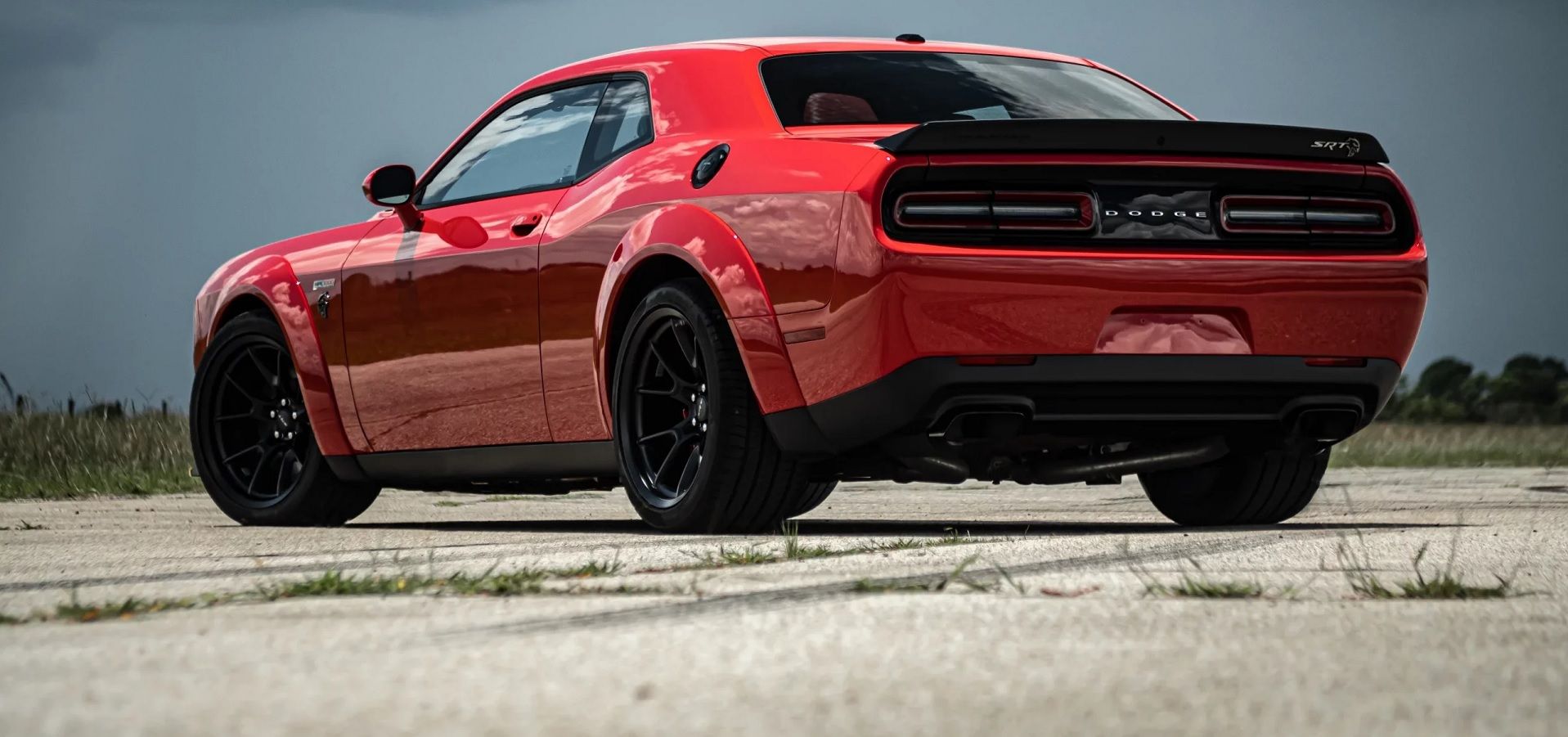Why would anyone invest in a particular car just because the sticker price looks good? Who does that without thinking about the long-term cost of ownership? Online automotive forums aren’t just a gathering place for enthusiasts and gearheads looking to swap horsepower stories. Many people come online to satisfy their curiosity about a vehicle’s reliability, maintenance, and the proverbial hole the purchase might burn in their pockets down the road.
While it’s relatively easy to find information about insurance premiums, fuel economy, and registration fees, getting correct information about long-term maintenance costs may not be as easy. You’d think it makes it simpler that some brands have a reputation that precedes them – for example, Honda’s reputation for reliability. The Land Rover? Not quite. By contrast, the Dodge Challenger enjoys a global reputation for power and athletic performance.
The Dodge Challenger is an iconic and popular decades-long-running muscle car, with several revisions and attendant issues down the road. So, not every model year Challenger is as good or as problematic as the others. The following paragraphs discuss ownership cost, the Challenger’s biggest problem, plus other reliability issues.
Why You Should Care About The Dodge Challenger Ownership Cost
We doubt anyone will be happy with a gigantic hole in their purse just to keep their beloved Challenger roadworthy, safe, and sound. That’s why it’s important to look beyond the MSRP and also consider the total cost of ownership (TCO) before signing that dotted line. TCO is the actual cost of the car because it includes how much it takes to actually ‘own’ it in relation to how many miles you can expect to get out of the car before it’s all over. So, TCO looks beyond upfront costs to include operational costs.
By operational cost, you’re thinking about the maintenance cost, mileage, registration, insurance premium, potential upgrades, licensing, and – most importantly – repairs. With enthusiast cars like the Dodge Charger and Challenger, prospective shoppers might prefer to just buy the thing instead of risk getting discouraged by the results of a calculated operational cost, especially with the long-term cost adjusted to today’s dollar value.
Nevertheless, that’s not a smart move. You might also consider subtracting the car’s value once it’s accumulated all the miles, bearing in mind that prices for both new and used cars shot up substantially in recent years due to supply chain and inflation challenges. According to Statista, the average price of a used car as of June 2022 is $28,200, with new models averaging $48,301, according to Kelly Blue Book data.
The Dodge Challenger’s Biggest Problem
The online automotive complaint resource CarComplaints analyzed model year comparisons of the Dodge Challenger based on owner-reported problems and found that the 2012 Dodge Challenger is the least reliable 2008 – 2019 Challenger model years. The report drew its conclusion from both owner-reported problems and expert ranking based on critical denominators like the severity of the problems and repair costs.
Interestingly, the problem owners reported the most about the 2012 Dodge Challenger is also the most common problem with Dodge Challenger across model years – electrical problems. CarComplaints and other complaint resource websites found that owners complained the most about issues relating to the Challenger’s electrical system, with the category taking up 22 out of 65 total complaints. Notably, 14 of the 22 complaints were about the alternator failing.
The rest split evenly between complaints of the engine failing to turn over and the battery getting sapped dry by the power windows/doors. Translated, your biggest concern about your Dodge Challenger’s reliability issues across model years is the alternator’s health. CarComplaints gave the alternator problem an 8 out of 10 Severity Rating. In fact, the 2012 model year Challenger suffered six recalls initiated by the NHTSA due to alternator problems.
If you’re wondering which model year Challenger would be kinder to your wallet and mental health, avoid the 2012 model along with the 2011 and 2013 model year Challengers. CarComplaint recorded 20 owner complaints about electrical problems on the 2013 model (just two fewer than the worst-reliable 2012 Challenger) and 14 complaints with the 2011 model.
Buying your Challenger brand-new? You won’t have to worry about electrical problems until you’ve racked up at least 50,000 miles on the car. When that time finally comes, RepairPal shows it’ll set you back an average of $700 to fix. While owners raised complaints on just about every model year Challenger, the electrical issues aren’t the only ones, as there were complaints about the interior accessories, brakes, body paint, and windows/windshield.
The Dodge Challenger Ownership And Reliability Problems
So, how reliable is the Dodge Challenger? It’s not like we can stop you from coveting the car even if it scored a 1.0 out of 5 reliability rating. Nonetheless, everything almost ultimately boils down to the model year as well as your maintenance habit, the vehicle’s history, features, and even the trim. A quick search through RepairPal returns a reliability rating hovering around 3.5 to 4.0 out of 5, with the former placing the Challenger 19th out of 24 midsize cars. Not bad.
Dodge has upgraded the suspension on recent Challenger models, improving their responsiveness and overall road manners to go with their athletic performance. Even so, it shouldn’t surprise you that older Challenger models remain popular among muscle car enthusiasts. Before we list the common Dodge Challenger reliability issues, bear in mind that a prompt and proper maintenance regimen and service schedules should keep your Challenger running smoothly for up to 400,000 miles.
With that said, the Dodge Challenger’s most common problems include TIPM (Totally Integrated Power Module) electrical problems with symptoms including unexpected deployment of the airbags, random honking, erratic power windows, and starters not cranking when turned over. This category is particularly endemic in the 2008 through 2021 Challenger models.
2008 to 2013 Challengers suffered from random airbag deployment, ranging from mild incidence to severe cases of outright explosion. Dodge actually issued several recalls due to this problem, so you can search the recall website using the VIN of your target.
A faulty air conditioning is another common problem with the Dodge Challenger, although it’s more common on the 2014 model. There were reports of leaks in the compressor and cabin as well as complaints about the unit blowing hot air or falling altogether.
Lastly, a leaky power steering assembly. There were complaints of the power steering fluid dripping into the engine bay. This can be particularly dangerous as it could cause a fire. Dodge issued a recall for the 2010 model over this problem. So, get the VIN and run it on the recall website.
Sources: Dodge, Car Complaints, Car Parts






-1.jpg)

.jpg)

More Stories
Pavé Bands vs. Plain Bands: London Trends
2 Hot Auto Stocks You Don’t Want to Miss out on in 2023
Protect Your Car With These Weatherproof Accessory Deals